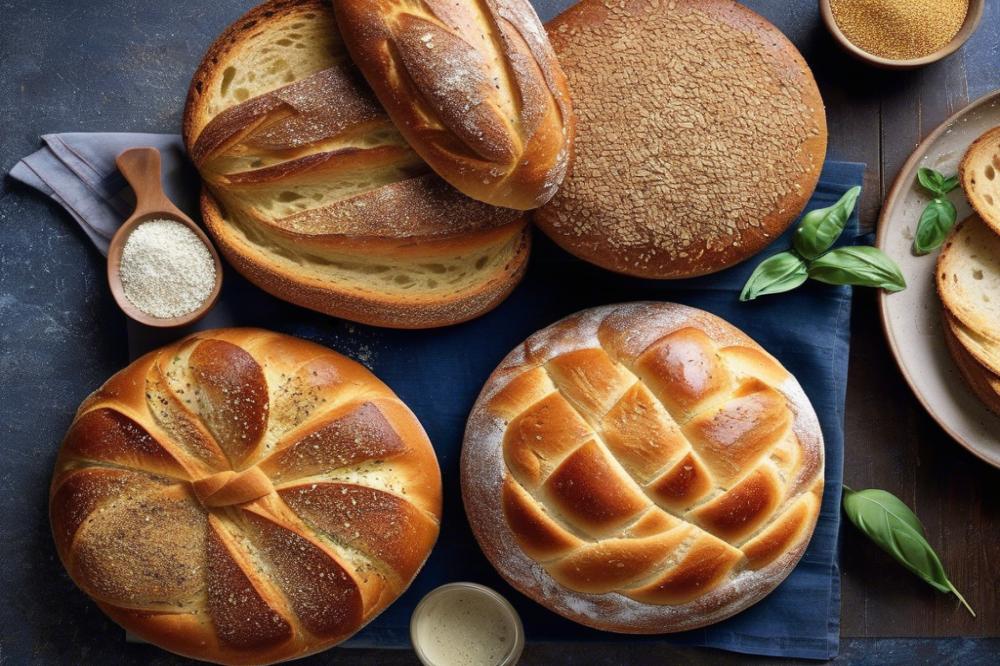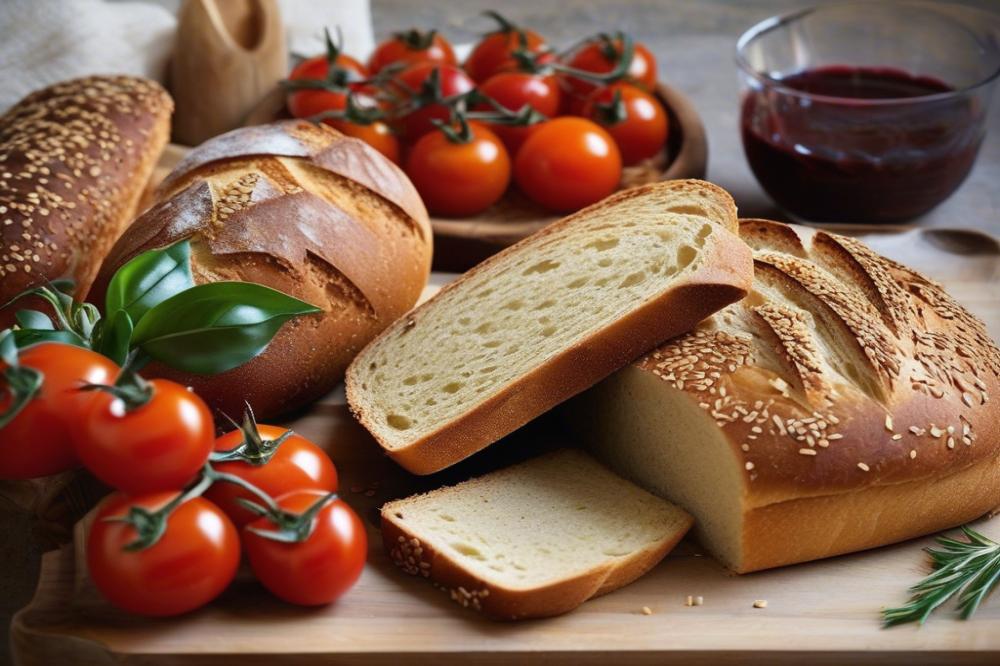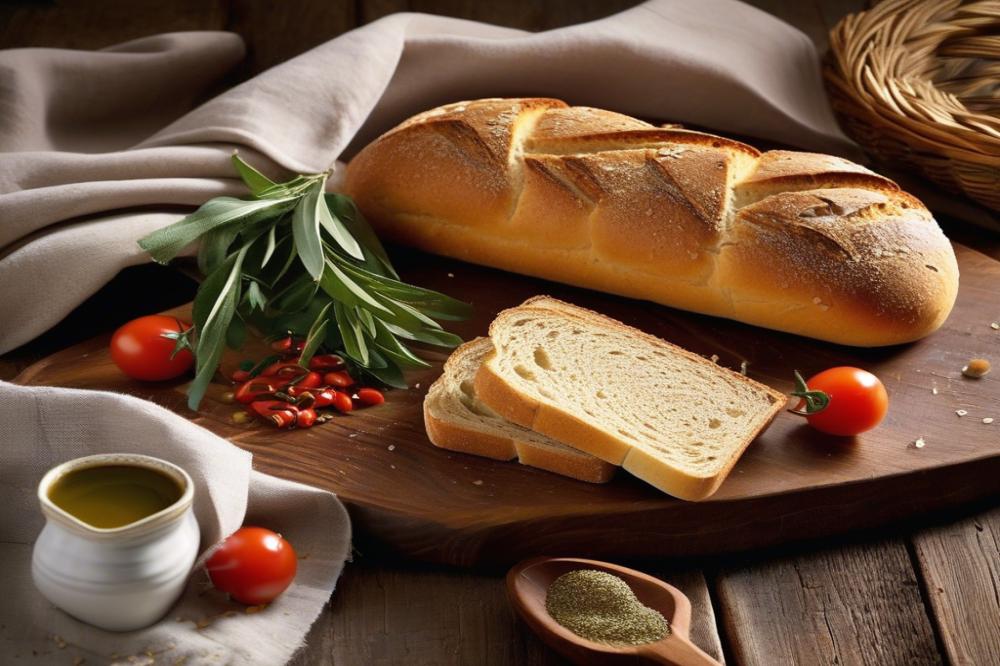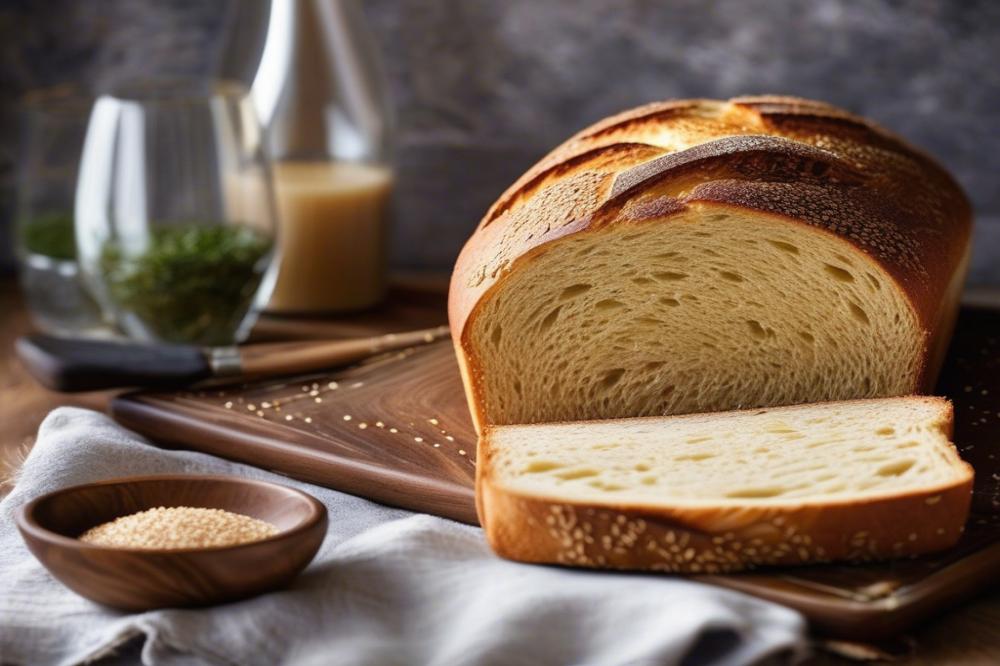Introduction
Pane Siciliano is a beloved Italian bread known for its distinct flavor and texture. This hearty loaf, often topped with sesame seeds, embodies the rich culinary traditions of Sicily. It holds an important place in the world of Italian baking, where each recipe reflects a deep history and cultural significance.
Traditionally, baking bread has been a time-honored practice in many Italian households. This rustic bread is not just food; it’s part of family gatherings and celebrations. The process of making bread in Italy often connects people across generations, creating bonds through shared recipes and techniques. Families often pass down their own Italian bread recipe from parent to child, allowing the heritage of baking to thrive.
Sicilian bread also ties back to the Mediterranean recipes that influence much of Italian cuisine. Ingredients like high-quality flour and olive oil come together to create a loaf that is both complex and satisfying. The use of sesame seeds adds a nutty flavor and a delightful crunch. Meanwhile, each artisan brings their own personality to bread making, contributing to the diversity found in every loaf. This homemade bread does not only serve as a staple on the table, but it also offers a taste of tradition that continues to inspire bakers around the world.
Pane Siciliano: A Taste of Sicily

Historical Background of Pane Siciliano
Pane Siciliano has deep roots in Sicily, an island known for its rich culture and history. This bread dates back centuries, reflecting the influences of various civilizations that settled in the region, such as the Arabs and Greeks. The use of sesame seeds is particularly notable, as they were introduced by Arab traders. These elements combined create a bread that tells a story of cultural exchange and tradition.
Cultural Significance in Sicilian Cuisine
In Sicilian cuisine, bread holds a special place. It accompanies many meals, symbolizing hospitality and community. Families often gather to share rustic bread, making it a staple in their culinary practices. At celebrations and gatherings, Pane Siciliano is often present, showcasing its importance in local customs. This sesame-crusted bread embodies the spirit of Sicilian gatherings, providing a link between the past and present.
Comparison with Other Types of Italian Bread
Not all Italian bread is created equal. Pane Siciliano stands out among other varieties due to its distinctive flavor and texture. While focaccia and ciabatta offer their own delightful characteristics, the sesame topping sets Sicilian bread apart. Other regional breads may focus on different grains or toppings, but the combination of a crispy crust and soft interior makes this bread memorable. Thus, it has a prominent place in traditional Italian cuisine.
Unique Characteristics and Flavor Profile of Pane Siciliano
The sesame seeds on the crust provide a nutty flavor that enhances the overall taste. This addition creates a delightful contrast with the bread’s chewy interior. Homemade bread has its own charm, but this specific recipe allows for a mix of textures that many find appealing. The bread is often slightly dense, which complements its rich flavor profile. When baking bread, using high-quality ingredients elevates the final product, making it a true artisanal creation. Mediterranean recipes frequently highlight the use of sesame, but in this bread, it is an integral feature.
Overall, Pane Siciliano is much more than just a loaf of bread. It is a culinary treasure that connects people to the land and its history. Enjoying this delicious treat helps to appreciate the rich tapestry of Sicilian culture and cuisine.
Ingredients and Cooking Instructions

Ingredients List with Quantities
- 500g bread flour
- 350ml warm water
- 10g sea salt
- 7g instant yeast
- 2 tablespoons olive oil
- 100g sesame seeds
Nutritional Information
This Italian bread recipe uses simple ingredients that vary in nutritional value:
- Bread Flour: 364 calories (per 100g)
- Warm Water: 0 calories
- Sea Salt: 0 calories
- Instant Yeast: 45 calories (per 7g)
- Olive Oil: 120 calories (per tablespoon)
- Sesame Seeds: 573 calories (per 100g)
Totaling approximately 1,575 calories for the entire recipe, portions will vary based on serving size.
Step-by-Step Cooking Instructions
Prepare the Dough
Start by mixing the warm water and yeast in a bowl. Allow this mixture to sit for about five minutes until it becomes frothy. In another bowl, combine the bread flour and sea salt. Create a well in the flour mixture, then pour in the yeast mixture and olive oil.
Kneading Process
Mix everything together until a rough dough forms. Transfer the dough onto a lightly floured surface. Knead for 10 minutes, stretching and folding until it becomes smooth and elastic. If the dough feels too sticky, sprinkle a bit of flour as needed while kneading.
First Rise
Place the dough in a lightly greased bowl. Cover it with a damp cloth or plastic wrap. Leave it to rise in a warm, draft-free area for about an hour, or until it has doubled in size. This step is vital for developing flavor in homemade bread.
Shaping the Bread
Once the dough has risen, punch it down gently to release the air. Transfer it onto a clean surface. Shape the dough into a round or oval loaf. Coat the outside lightly in water, and then roll it in sesame seeds for that authentic Sicilian bread look and taste.
Second Rise
Place your shaped dough onto a baking tray lined with parchment paper. Cover it again with a cloth and let it rise for another 30 to 40 minutes. This second rise helps the dough to get even fluffier.
Baking Process
Preheat your oven to 220°C (428°F). Once the second rise is complete, bake the bread for 25 to 30 minutes. The crust should be golden brown and sound hollow when tapped on the bottom. This is the moment when rustic bread truly comes to life.
Cooling and Storage Tips
After baking, remove the bread from the oven and let it cool on a wire rack. Allowing it to cool promotes an ideal texture. To store, wrap the bread in a cloth or place it in a paper bag. Avoid using plastic to maintain the crispy crust. Homemade bread can last for a few days at room temperature, or you may freeze it for later enjoyment.
The Health Benefits of Pane Siciliano

Cooking at home has numerous advantages, particularly when it involves an Italian bread recipe like this one. Freshly baked bread made from simple ingredients can provide substantial nutritional value. Whole wheat flour is often used in Sicilian bread, and it is a great source of dietary fiber. Fiber is essential for digestive health. It can help maintain steady blood sugar levels and promote a feeling of fullness.
Homemade bread stands out when compared to store-bought options. Many commercial breads contain preservatives and additives that can compromise their quality. By making baked goods at home, you have control over what goes into your food. You can choose organic ingredients, avoid unnecessary additives, and adjust flavors to your liking. Artisanal bread, particularly Pane Siciliano, allows for creativity and personalization in baking.
The Role of Whole Grains
Incorporating whole grains into your diet is crucial. Whole grain products, including rustic bread, are packed with vitamins and minerals that support overall health. These grains are beneficial because they retain the bran and germ during processing. As a result, they offer more nutrients than refined grains. Whole grains also contribute to heart health by helping to lower cholesterol levels.
Sesame seeds play an important role in this bread recipe as well. These tiny seeds are small but mighty. They are rich in calcium, magnesium, and iron. These nutrients are vital for strong bones and overall health. Additionally, sesame seeds contain healthy fats that can support heart health. They add a delightful crunch and nutty flavor to every bite.
Integrating Pane Siciliano into a Mediterranean Diet
The Mediterranean diet emphasizes whole foods and balance. This dietary pattern includes plenty of fruits, vegetables, grains, and healthy fats. Pane Siciliano, with its wholesome ingredients, fits perfectly into this eating style. Bread making can be a great way to introduce more variety into your meals while sticking to healthier choices.
Pairing Sicilian bread with olive oil and fresh tomatoes creates a satisfying snack or appetizer. Using fresh ingredients enhances the flavor while keeping meals nutritious. Furthermore, consuming bread in moderation can be part of a balanced diet. The key is to enjoy it alongside healthy foods. Integrating such bread into your diet can elevate the dining experience while contributing to a healthier lifestyle.
Crafting the Perfect Pane Siciliano
Tips for Successful Baking of Rustic Bread
Baking bread requires practice. Start with fresh ingredients. Measure flour and water accurately for the best results. Use a kitchen scale for precision. Temperature affects dough, so work in a warm kitchen. Patience is key. Allow the dough to rise adequately for best flavor.
Importance of Yeast and Fermentation
Yeast plays a crucial role in bread making. It ferments the sugars, allowing dough to rise. Active yeast leads to fluffy interiors. Many recipes suggest using both instant and fresh yeast. A longer fermentation time can enhance flavor. Letting your dough rise slowly in the refrigerator can develop rich tastes.
Techniques for Achieving a Perfect Crust
To achieve a crust that is crispy and appealing, steam is your friend. Placing a pan with water in the oven can create steam during baking. That helps the crust to form beautifully. Baking on a preheated stone or baking tray can also offer a great texture. Brush the surface with water before adding sesame seeds to help them stick.
Customizing the Recipe with Herbs and Spices
Consider adding flavors to your homemade bread. Herbs such as rosemary or thyme can elevate this Sicilian bread. For a spicy kick, red pepper flakes can be mixed into the dough. Incorporating garlic powder adds a savory profile. Don’t be afraid to experiment—adding different ingredients can lead to exciting Mediterranean recipes.
Serving Suggestions
Pairing Pane Siciliano with Italian Dishes
Sicilian bread complements a variety of traditional Italian cuisine. Consider serving it alongside hearty pasta dishes, like spaghetti marinara or lasagna. The crusty texture balances nicely with sauces. Another great option is to enjoy it with grilled vegetables or homemade ratatouille. This pairing adds depth to your meal. You might also create a classic panini using this artisanal bread. Just layer your favorite meats and cheeses, then grill until melted and crispy.
Creative Uses for Leftover Bread
Transform stale bread into something new. For instance, make delicious breadcrumbs by pulsing it in a food processor. These homemade crumbs work well for coating chicken or fish. Alternatively, you could prepare a savory bread pudding. Mix eggs, cream, and your choice of vegetables. Bake until it’s golden and firm for a hearty dish. French toast is another option. Slice the bread and soak it in a sweet egg mixture, then fry it for a delightful breakfast treat.
Suggestions for Dips and Spreads
Pair your bread with a variety of dips and spreads. Olive oil and balsamic vinegar create a classic dipping sauce. Just drizzle the olive oil on a plate and add a splash of vinegar. For something richer, try a creamy hummus or a zesty artichoke dip. This enhances the Mediterranean recipes you might enjoy. Whipped feta or soft goat cheese offers a bright and tangy flavor. Spread it on warm slices of rustic bread. It’s a delightful way to elevate your snacking experience.
Final Thoughts on Pane Siciliano
In the world of Italian baking, Pane Siciliano holds a special place. This bread, with its crunchy sesame crust and soft interior, is more than just food; it’s part of a rich culinary tradition. Its origins trace back to Sicily, where the sun-kissed land influences the flavors and textures of the dishes. Making this loaf at home connects one with centuries of Italian culture and brings the joy of genuine taste to the table.
Trying this Italian bread recipe can be a rewarding experience. Gather your ingredients and follow the steps carefully. The aroma that fills your kitchen while it bakes is irresistible. It’s an excellent way to impress family or friends with your baking skills. The satisfaction of making your own deste bread is unmatched.
Embracing the art of bread making can be a delightful journey. Each loaf created is a new opportunity to explore flavors and techniques. Homemade bread not only offers quality but also allows you to add personal touches to each batch. Bakers often find themselves experiencing a wonderful sense of accomplishment with every rise and knead.
So, roll up your sleeves and give this a try. Making Sicilian bread at home is not just about the end product; it’s about enjoying the process. Dive into the experience and savor every moment, one slice at a time!

